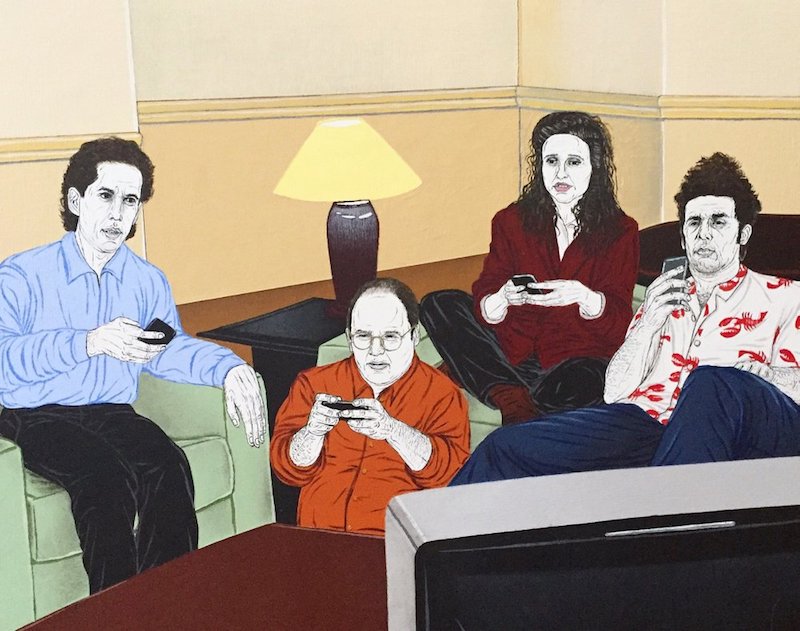Coping with and, sometimes, without our phones for a balanced life
This morning the alarm clock on my phone woke me up and, as it does every day, a gentle melody tune eased me up from my pillows. I checked my messages, scrolled the news, and cleared my notifications while I had my coffee. I laughed at the messages my family sent several hours before, strapped on my headphones to listen to my favorite Spotify playlist and stepped out the door.
When I arrive in my classroom each day, I turn on my PC, open up my laptop, check my email, grade my students’ assignments and scroll the headlines all before the bell rings. I’ll view my phone again during lunch to message family, browse Booking.com and use Google Keep to record my ideas. I’ll receive another 15-30 emails throughout the day and another 10 after 4pm. I also get countless messages from groups of friends on Whatsapp and Facebook Messenger. I try to refrain from checking my Facebook or Instagram until the day is done and I can decompress. The phone checking will continue after work while I watch TV, exercise and even when I eat.
Does This Sound Familiar?
Like most of you, I can’t live without my phone. We need our phones to be more efficient and “smarter,” but does it actually help us? Every day starts and ends in a similar manner. Strapping my eyes to my cell phone wastes precious time I could use for sleeping, reading or talking to loved ones. I was never one to play games on my phone, I’d rather read from my Kindle, but that’s just one more reason to increase my screen time. Our phones have become a way of life.
We are inundated with notifications that zap away our attention. I may intend to use my phone for one thing, but popular app interfaces have made it so easy to scroll through a bottomless pit of headlines in a 24-hour news cycle. Additionally, Instagram, my favorite social media platform, provides a thoughtless braindead form of entertainment. Time literally escapes me as I scroll through funny videos from Barstool sports, puppies and 90’s classic wrestling matches.
This isn’t news. It’s been happening for a while. It’s only recently started to be seen as something that is harmful to us. In a June 2018 CNN interview titled Apple’s Screen Time feature proves you’re addicted to your iPhone, Apple CEO, Tim Cook, stated he uses his phone too much and announced a screen time app to help others use their phone less. Well, thanks Tim, this is all your fault! Supposedly, Steve Jobs didn’t even let his kids use the iPad when it first debuted. He’s not the only thought leader or celebrity to warn against cell phone usage or even give it up. Ask Denzel Washington. He challenges you to turn off your phone for a week. Can you do it? Because access to social media and cell phones go hand-inhand these days, it is truly harder than we think.
Technology in the classroom is sometimes seen as the future of learning. Being a technology education coach and social studies teacher I get to see the grass on both sides of the fence. I can assure you my beliefs are to use technology to improve traditional learning, not replace it. One problem that came across my desk regarded which app to use to get kids to record their homework. Different teachers have different techniques. Our Virtual Learning Environment also had its own method. Sometimes big problems require simple solutions. The best and easiest way for children to write down their homework is to write down their homework. Writing is still a skill we need to utilize. When batteries die, connections don’t work, computers fail or data runs out, a simple pen and paper gets the job done. Additionally, a piece of paper or a journal won’t vibrate to let you know someone liked your photo. Each time our children check a message on their phone a little bit of dopamine is released into their brains. As a result, we are constantly checking to get that feeling.
Zero Interruptions
Some of you may not have as techfilled days as I do, but no doubt your job requires email. Email serves great purposes to businesses and worker efficiency, but how much is too much? We need to distinguish when it’s appropriate to write an email, or simply walk to that person and convey your message face-to-face. Even making a call to that person can save you time and energy. Think about how much time you spend crafting an email to ensure you don’t come off the wrong way. What could you have done in that 20 minutes? And how often do you open your inbox to write one email, but ended writing a dozen? There is something genuine about face-to-face interaction. According to Adam Atler, who authored the book Irresistible: The Rise Of Addiction Technology, we develop our emotions based on how others react to us. We learn to portray and interpret other people’s feelings based on face-to-face conversations—emojis aren’t going to cut it in the workplace.
We need to find a better way to use our time. Technology is designed to make our lives easier and better, but it has highly addictive qualities. According to Time Well Spent (Humanetech.com) movement founder and former Google designer, Tristan Harris, those notifications and little blue lights are engineered to keep you tethered to your phone. Even he isn’t immune from the chimes, buzzes and vibrates of the phone. The companies that made the apps intended to keep you on them as long as possible. As a result, it has monetized your time.
How can we as teachers and parents tell our children to get off their phone or laptops when we can’t do it ourselves?
I can’t tell you how to live with zero interruptions from your phone. I’m still figuring it out myself. I admire those few remaining souls that never bought a smartphone, but we can take steps to change our cell phone behavior—if we want to. More importantly, we should be taking steps to prevent our students and children from using them too much. The first step is to model behavior. It’s easier said than done, but don’t eat at the dinner table with your phone out while instructing your child not to. The further away from the phone, the less anxiety one will experience. A study done by McCombs School of Business discovered that if your smartphone is within reach, your cognitive ability decreases.
It’s ironic that our phone does have apps that can help you better use your time. A simple search of the following items in the App Store or Play Store can help:
Demetricator: Eliminates the numbers you see for facebook notifications. Good for your browser.
Moment or Quality time: Tells you how long you spend on your phone and for what purpose.
Deluminate: A background dimmer lowers the colors your screen emits so it’s easier to go to sleep. This one is for Chrome, but this feature is also built into some of our phones (grayscale).
Here are several non-tech ideas you and your child can do together:
- Clear and block all notifications.
- Turn off emails after work in your app settings, or take work email off your phone altogether.
- One-hour challenge: Don’t look at your phone for one hour before bed or one hour after waking.
- Remove phones from the dinner table.
Some of you may already have great techniques to limit cellphone use, others may be a “master of your domain,” or “queen of the castle.” Imagine if popular sitcoms reflected what life is actually like these days. Watching Jerry, George, Elaine and Kramer text each other just wouldn’t be the same. Please share your ideas to my email (before 4pm) and keep reading.




